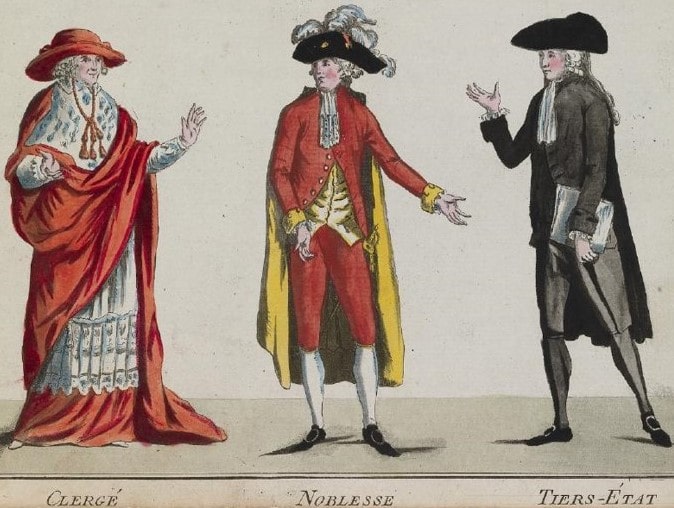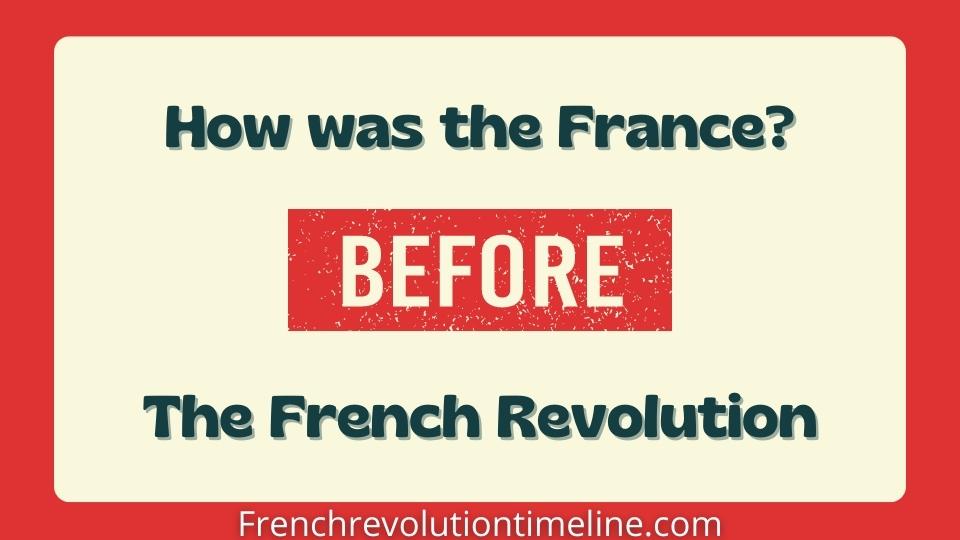Chaos, uncertainty, lack of control everywhere, and… the head of a king rolling? Yes, All this and much more was the French Revolution – this historical event was the first step to the era of modernity and a complete change in the social composition.
But what were these social classes like? What were the Three Estates of the French Revolution? These are some of the main questions that usually arise. Of course, some people had a more leading role than others, but all had a determining role (for or against) in the French Revolution.
In this article, I will focus on the aspect of social classes in France during the revolution. This class system was complex, marked by inequalities and hierarchical relationships, so it is not surprising that one of the greatest revolutions in history has arisen.
How were the French people divided socially through the Three Estates in the French revolution?

In French society, during the 1700s, there were what is now known as three well-defined social classes. These three estates classes relate to each other in different ways; in some cases, they are more conflictive relationships than in others.
To make it easier to understand, I will give you a brief insider on each of the estates.
The Clergy (the first estate)
This was the highest social class of the time because of its great prestige and influence as well as its level of wealth; they had so many properties that they managed to occupy up to a quarter 1/4th of the total area of France.
Their territorial and proprietary domination increased in part because faithful religious followers granted a piece of their land as property. In addition, at that time, they had to pay taxes to the church, so they had income from different sources.
This social class had a subdivision within it. If you analyze it carefully, it can be divided into High and Low Clergy. Most wealth benefited only the High Clergy, basically the bishops and abbots. These also used to have noble origins and lived in Versailles in the King’s court.
The lower Clergy was composed of priests and vicars. They lived more modestly, and their origins were from the third estate, so they were key players in supporting the revolution. In addition, they did not live in Versailles but were in different provinces, which gave them closer contact with the people.
The majority of the clergy were old, conservative men who defended the privileges they had and were reluctant to any change. This group was also very small; it represented less than 1% of the total population.
The nobility (the second estate)
The nobility was the second most powerful social class in France. They were a small group that had great power, prestige, and wealth. This was because they had all the land; in fact, they owned almost 60% of French territory and received feudal rights from the peasants who worked on them.
This group was also subdivided; on the one hand, some had a title of nobility and lived off their rents (basically what we would now call landlords), and on the other hand, those who worked for the king or held some public office in the government.
The first group was called the “nobility of the sword” because their ancestors had been warriors, and the second group was called the “nobility of the robe” because their work consisted mainly of being judges or holding some public office in which they wore a robe.
The nobility had many privileges; for example, they were not taxed and did not have to do military service. In addition, they could buy and sell offices, which gave them even more power.
This social class was made up of old families who had been noble for generations, so they defended their privileges and were against any change.
Most of the nobility lived in the countryside and had closer contact with the people, but this does not mean that all of them helped or decided the revolution; only a tiny part of them lived in Paris or Versailles with a highly luxurious life.
The Third Estate (everybody else)
The third estate was everybody else who was not part of the clergy or the nobility. It was a very diverse social class because it included people from different social backgrounds and with other occupations mainly was divided into three groups: the urban bourgeoisie, the peasants, and the workers.
The urban bourgeoisie were people who lived in the city and had a fair economic status; they were merchants, lawyers, artisans, doctors, etc. They were a small group but influential because they had money. On the one hand, the wealthy even some rich ones but did not belong to the nobility. Not coming from a noble lineage or not belonging to the clergy, they could not rise to a high social class known as the bourgeoisie.
The peasants were the largest group; they represented more than 80% of the population but had little power or money. Most of them were poor and had to work hard just to survive.
The workers were also poor; they worked in factories or did manual labor. They also had a hard life and barely managed to make ends meet. The peasants and workers were barely managed to pay the necessary taxes and have enough to survive.
The most vulnerable members of the Third Estate were the sans-culottes, whose exact translation is “without breeches.” This was a way of describing their clothing since members of the upper classes or the bourgeoisie did have these pants made of good fabrics.
Unlike the other two social classes, the third estate had the least privileges and was taxed heavily to support the clergy and the nobility before outbreaking the French revolution. Moreover, this group was overgrowing because of the increased population, and the migration from rural areas further led to miserable living conditions.

What characteristics of the third estate helped fuel the revolution?
Many people forget that the bourgeoisie did not always belong to the upper class (like it was during the 1800s, and one could even say it is now). The social system of France did not allow them to rise on the social ladder, so they were accumulating power and wealth, but they could not do so many things with it.
This was the first splash of fuel for the revolution, but another was the miserable condition in which the people of the lower class lived. From artisans to peasants and sans-culottes, these people lived in unimaginable states of misery.
The third estate barely made enough to survive, and the system was becoming more and more oppressive for them. They did not have any benefit, only suffering. Therefore, they had nothing to lose during the revolution, so this was a great spark for the French revolution to break out later.
Even some priests belonging to the lower clergy assisted in the revolution in different ways. Although in the cases where their participation was proven, the priests lost their status within the religious institution since the revolution went against the dominant church at the French revolution phase.
So, here’s the post on Three Estates in the French Revolution ends.




